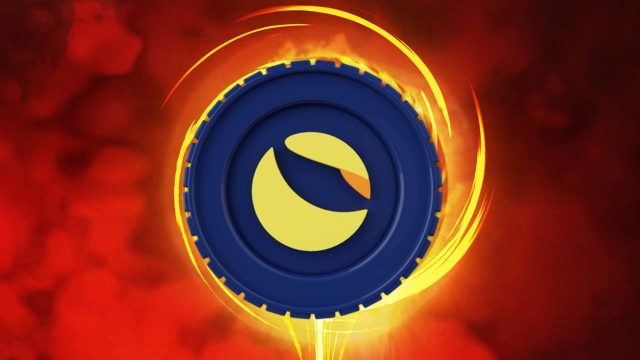Dec 11, 2023 | News

Reported by Shai Deshe Wyborski (大胡子)
The Rusty-Kaspa team has been working hard on the testnet 11, leading to some delays as they implement new performance improvements. These improvements are complex and require careful coding, resulting in the postponement of the public Testnet 11 run. Recently, two significant enhancements have been made:
First, the team has optimized how child blocks are tracked, reducing the number of database writes needed per block. This change alone has improved performance by over 80%.
Second, they’ve improved reachability queries, which are essential for the GHOSTDAG protocol. This optimization has significantly lessened the strain on the system’s disk space.
These updates have more than doubled the header processing rate of the client, especially benefiting machines with lower memory. The team is now focused on merging these changes and beginning internal testing.
For more details on this update, visit Kaspa’s official website. This report is brought to you by Kaspa.
Dec 5, 2023 | News
The team at Kaspa has been hard at work with a variety of app integrations, new exchanges, and global meetups. They have also been making significant progress on the RUST Re-write and other developments, with more contributors joining the effort.
Kaspa recently provided an update on the 10bps Testnet 11 relaunch, revealing that internal testing has identified areas for improvement. The team is currently addressing these issues and plans to conduct an internal relaunch on December 2nd. If successful, a public relaunch will be scheduled.
Additionally, Kaspa has completed a major refactor to optimize record storage in the local database, which is currently being tested. This improvement is expected to greatly enhance performance and efficiency.
For those interested in the technical details, references to the GitHub pull requests and issues can be found on Kaspa’s website.
The full update can be read on Kaspa’s website, where the original post “Rusty Kaspa Update-12-23” was published.
Dec 4, 2023 | News
From December 4th to 6th, 2023, a significant event in the digital innovation and blockDag technology sector took place. IronWeb, an online national student competition organized by 10h11 and led by Julien Daubert, attracted over 500 second-year university students from ISEG. These students, all trained in digital marketing and communication, participated in the competition to enhance their skills in data utilization, artificial intelligence (AI), and web3.
The three-day event encouraged teamwork and innovation. Students formed teams of 3 to 5 members, selected a topic at the start of the competition, and developed a comprehensive digital strategy using various tools to refine their approach each day.
A key highlight was on the third day when students explored decentralized payment systems. Each team created a KASPA wallet, demonstrating their willingness to adopt decentralized payment methods for their projects.
Additionally, HyperCycle, a leader in decentralized AI, played an essential role in educating the students about the potential of decentralized technologies. This partnership underscored the importance of collaboration between industry and academia in developing future tech innovators.
The enthusiasm of the students was evident through the team photos with their KASPA wallets, showcasing their excitement to embrace blockchain technology.
In conclusion, IronWeb 2023 was more than just a competition. It was an opportunity for young people to explore the vast possibilities of blockchain and related technologies. As these students move forward, they are equipped with the knowledge and experience gained from IronWeb to lead the way in the digital world. This event is a prime example of how passion, innovation, and education can come together to shape a brighter future in technology.
The original post can be found on Kaspa’s website.
Nov 29, 2023 | News
After experiencing a slight pullback on Monday, LUNC has resumed its upward trajectory. The cryptocurrency has seen a significant increase in value, with a double-digit percentage rise in the past day, pushing its price back over the $0.0001 mark. As the momentum continues, CoinCodex’s machine learning algorithm has offered a forecast for when LUNC’s price may hit $0.0005.
LUNC’s Journey to $0.0005: A Timeline
CoinCodex’s machine learning algorithm remains optimistic about LUNC’s future price, although it suggests that reaching the $0.0005 milestone is not imminent. The algorithm’s predictions for the next five days and the following month both indicate a price level of $0.000118, with little fluctuation expected.
However, the algorithm projects a longer-term view that LUNC’s price could surpass $0.0005 by 2028. That same year, it also anticipates a potential dip to as low as $0.000049. The highest predicted price within the next seven years, until 2030, is $0.000504, after which a significant downturn is expected, potentially adding six zeros to its current value.
Regarding market sentiment towards the digital asset, the outlook remains predominantly positive with 22 indicators signaling bullish and 11 bearish, resulting in a bullish sentiment index of 67% versus a bearish 33%.

LUNA Classic’s Remarkable Market Performance
LUNC’s price surge has extended into Wednesday morning, achieving nearly a 30% increase from its Tuesday low. This positions LUNC among the market’s top performers, trailing only behind SEI network and USTC in terms of gains.
This price increase coincides with a decrease in LUNC’s trading volume. CoinMarketCap data indicates a roughly 20% drop in daily trading volume, suggesting reduced selling activity and leaving buyers to push the price higher.
Currently, LUNC is trading at $0.0001222, marking an approximate 30% rise within 24 hours. If the selling pressure continues to ease, LUNC’s price could potentially breach the $0.00015 mark before the day ends.
Simultaneously, USTC, LUNC’s counterpart, has experienced an impressive 50% surge in a single day. This rally may be attributed to a recent community proposal aimed at restoring both tokens to their former prominence.
Source: bitcoinist.com
Nov 28, 2023 | News
O3finance recently hosted an event from October 30th to November 10th, 2023, which brought together key leaders from Nigeria’s tech industry and beyond. Nwafor Obinna Balor, the Nigerian Ambassador for Kaspa, represented the cryptocurrency at the event. He held daily sessions to discuss the advantages of Kaspa BlockDAG and its potential as a top 10 cryptocurrency.
The students showed great interest in Kaspa, with over 20 institutions participating and more than 20 wallet downloads per institution. The Community Marketing Fund supported the distribution of $KAS coins to new users, although no public posts were made to avoid regulatory issues.
Additionally, a Kaspa Meetup took place on November 7th, 2023, at Buckingham Mall in Abeokuta, Nigeria. The event attracted 70 attendees and featured speakers Raymond Ref and Creeds Code, who discussed Kaspa’s technology, tokenomics, and community involvement. The event was widely promoted and resulted in increased interest and investment in Kaspa.
In Kampala, Kaspa Blockdag celebrated its second anniversary with over 27 attendees. The event featured guest speakers Niwamanya Martin, Mucunguzi Moses, and Elias Hezron, who shared their expertise on blockchain technology, crypto investment strategies, and the Shukuru Wallet. A cake-cutting ceremony and swag giveaways added to the festivities.
The events in Nigeria and Uganda were successful in promoting Kaspa and engaging the community, marking a significant milestone for the cryptocurrency.
Nov 21, 2023 | News
Kaspa, a rising star in the world of decentralized finance (DeFi), is making waves with its latest development – Wrapped Kaspa (wKAS) – now available on the Polygon and BNB blockchain ecosystems. This move, facilitated by the expertise of Chainge Finance, marks a significant leap forward in Kaspa’s journey towards greater blockchain integration and interoperability.
In layman’s terms, each network now has a unique contract address for wKAS transactions, with BNB’s at 0x51e72dd1f2628295cc2ef931cb64fdbdc3a0c599, and Polygon’s at 0x3562ddf1f5ce2c02ef109e9d5a72e2fdb702711d. Users are advised to double-check these addresses to ensure the safety of their crypto assets.
The expansion of Wrapped Kaspa onto Polygon and BNB networks is more than just a token gesture. It represents a significant upgrade for the Kaspa ecosystem, offering users increased flexibility and a wider array of options for managing their digital assets. This integration allows Kaspa users to explore new functionalities and experiences while introducing Polygon and BNB users to Kaspa’s unique offerings.
Behind the scenes, Chainge Finance deserves recognition for their role as digital bridge builders, using advanced Distributed Control Rights Management (DCRM) technology to ensure a seamless and secure connection between Kaspa and the BNB and Polygon networks. Chainge Finance’s proven track record in cross-chain solutions adds credibility to this expansion initiative.
In conclusion, Kaspa’s entrance into the Polygon and BNB networks is just the beginning of an exciting chapter in the DeFi story. It opens up new opportunities for innovation and community growth, allowing users to delve into the diverse possibilities of DeFi while contributing to Kaspa’s dynamic role within this ecosystem. For those on the go, bridging Kaspa can be conveniently done via the Chainge Finance mobile app.
Stay connected with Kaspa through their official channels on KASPA, KASPA WIKI, MEDIUM, TELETYPE, DISCORD, TELEGRAM, TWITTER, GITHUB, N. R. Crowningshield, and Bubblegum Lightning.
For more details on Wrapped Kaspa’s integration into Polygon and BNB, visit the original post on Kaspa’s website.


